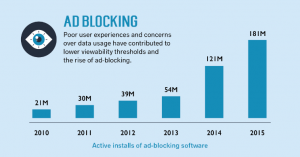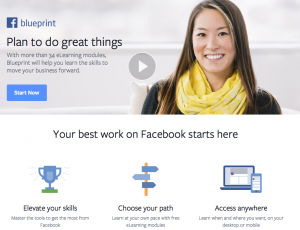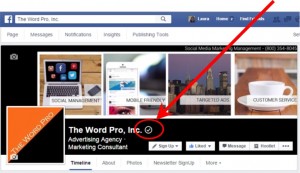 2015 brought us some subtle, seemingly-invisible changes in the way web sites worked to support and enhance the businesses and organizations they represent. For many web site owners, this was less the year of the redesign than it was the year of the behind-the-scenes tweak. Between adding functionality that benefits your search engine rankings to adding usability that benefits your users every step of the way, 2015 was the year that infrastructure and strategy was at the top of every site owner’s to-do- list. If you haven’t made these changes to the back office of your web site yet, get your pot of coffee going now! You’ve got a lot to do.
2015 brought us some subtle, seemingly-invisible changes in the way web sites worked to support and enhance the businesses and organizations they represent. For many web site owners, this was less the year of the redesign than it was the year of the behind-the-scenes tweak. Between adding functionality that benefits your search engine rankings to adding usability that benefits your users every step of the way, 2015 was the year that infrastructure and strategy was at the top of every site owner’s to-do- list. If you haven’t made these changes to the back office of your web site yet, get your pot of coffee going now! You’ve got a lot to do.
Mobile-Friendliness
Is your site easy to use on a phone? If your answer to that question was anything but an immediate “absolutely, yes!,” then you were not paying attention last year. You can get a quick answer for your site using Google’s Mobile-Friendly Test. If your site is mobile-friendly — meaning that your users can get to your information in a visible, usable way from a variety of smart phones and tablets — then you’ll see this beautiful vision on the Mobile-Friendly test results page:

If you don’t see that, you can put this issue at the top of your “problems to solve” list right now. Here’s why:
- The Almighty Google wants you to do it. They explain why in their blog post, but frankly, if the leading search engine on earth is giving preference to sites that are mobile-friendly, you want to be mobile-friendly. End of story.
- More people are finding your site via their phones than ever before. Industry watchgroup SearchEngineLand reports on the growth of mobile searching AND mobile purchasing nearly every single day, but here’s a great overview.
- You have lots of competition. If your customer or potential donor can’t get done what they want on your site via their phone, they’ll leave. It’s easy. Don’t lose them over this — spend the time and energy to get your site visible and usable on all the devices your customers use.
Integrated Social Media
Ideally, you conquered this before 2015. After all, in January of 2015, we had reasonable proof that nearly a third of site visits overall were coming from social media. If your business “doesn’t do social media,” your business is still ON social media — you’re just not engaged with the message, communication, and public commentary there. As the brilliant Scott Stratten writes about brand engagement:
“Social media is just a fancy term for talking to other people. When you listen and value your customers you can create content and products that give value back to them. Be a part of the conversation; find out what they like to chat about. Care about what they are looking for. And then be there, to have a conversation that matters to them.”
That means having your web site connected to your social media as much as it means having a social media presence. Some quick ways to do this:
- Include social media icons on your site for the channels where you are already engaged. You can put them in the top of the page, the footer, your sidebar, and on your contact page — but make it clear where you want your users to find you for real conversation.
- Don’t include social media icons on your site for the channels where you set up an account but never check it. By “never,” I mean “less than once a week.” Remember the last time you left a voicemail for someone and they called you back a week later, saying, “Oh sorry, I never listen to my voicemail.”? That’s what “never” means in social media. If a customer leaves a comment or a tweet or some other tidbit out there for you, and you either never respond or respond long after they needed your answer, that’s bad. Delete the accounts you never use, and unlink them from your web site.
- Match up your visuals. If your web site design changed this year — and especially if your logo changed this year — make sure the look-and-feel of your social media sites also reflects that change. Use this guide to help you with sizing.
Good Content. No, Really: GOOD Content.
The days of keyword-stuffing your web site are over. If that phrase doesn’t mean anything to you, good — it was a method of gaming search engine rankings by hiding keywords in tiny white type at the bottom of your page, hoping that a keyword appearing 100+ times would result in a higher search ranking for that keyword. Most search engines have now caught on, and the algorithms they use to determine which site to bring up for a given search term are now far, far more sophisticated.
Now, your content actually has to be good.
This means several things: it has to be understandable, well-organized, regularly-updated, and structured in an understandable way. It can’t be written at too difficult or too easy of a reading level. It should be easily sharable, and ideally, it will get shared enough to generate its own self-perpetuating traffic increases over time. It should be readable visually — accessible and usable according to the standards of the day.
There is a fantastic, deep and well-written study by Searchmetrics that digs into this topic as it pertains to search engine rankings, but this all applies to the web in general — users are more sophisticated and pickier, and your content has to rise to their requirements.
The internet never closes its doors. The beginning of 2016 is an arbitrary moment to begin improving your online presence, but you have to start somewhere. These are the areas of attention you should be considering at all times, and starting now is better than ignoring these issues for another year. Add value for your customers, donors and web site users. Remember that the site you’re building is for them.
Digital & Social Articles on Business 2 Community(50)






